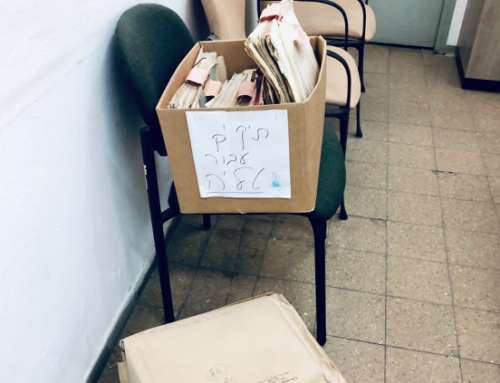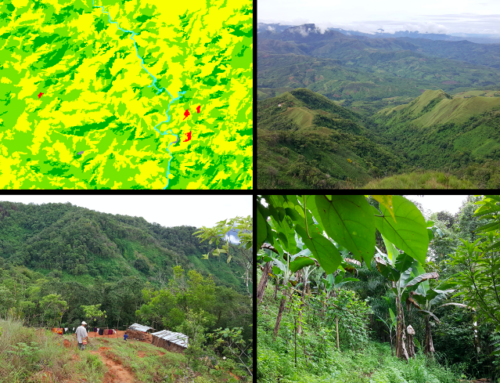Wolhasan Forest in South Korea primarily consists of conifer plantations (Larix kaemperi and Pinus koraiensis) and oak-dominated natural forests (Querqus mongolica, Quercus serrata, Quercus variabilis, etc.). It arguably represents the physiognomy and ecology of typical temperate forests in the central part of the Korean peninsula. Due to its geographic proximity to Seoul, where numerous research-intensive universities are located, Wolhasan is known as a prominent “research forest,” for it has hosted numerous long-term research projects across the subdisciplines of forest science and field ecology since its establishment in 1979.
Between 2017 and 2023, I followed forest scientists and worked alongside them as they traveled through research forests, laboratories, classrooms, and conference rooms, in order to understand how forests have become critical sites of knowledge production and state-led intervention in the wake of Japanese colonialism, the Korean War, and U.S. postwar imperialism. As part of my ethnographic fieldwork, I frequented Wolhasan and learned about its social, ecological, and institutional specificities.
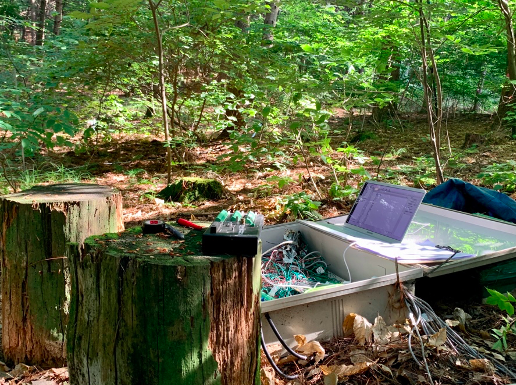
Figure 1. Maintaining measurement and recording equipment in a research plot. Such devices have been used to “track a rhythm” or “take the pulses” of forests over a decade. Picture taken by the author on June 16, 2021.
In the fall of 2020, Jieun (pseudonym), one of my scientist interlocutors, started her graduate research in Wolhasan studying seasonal variations in fine root production and growth patterns using an in situ root imaging system. She planned to use repeated root images to better estimate the subsurface dynamics of forests, which is a growing concern among scientists over the impacts of climate change on forest soils and underground carbon balances. However, Jieun’s position as a newcomer to both the Wolhasan forest and her lab put her in a difficult situation. She struggled to find proper ways to set up her field observation equipment as part of her research design. Specifically, Jieun was assigned the responsibility of identifying spots within established research plots to install dozens of transparent acrylic tubes into the ground. She was also asked to carefully plan ahead in order to minimize potential disturbance to the delicate web of trees and scientific equipment. Jieun’s main concern was that, because her predecessors in the lab had attentively managed these plots for more than a decade, her acrylic tubes could indeed be a disruptive addition to a number of permanent research installations—such as living trees with ID tags, delicate sensors and field equipment, and electrical wires and data cables.
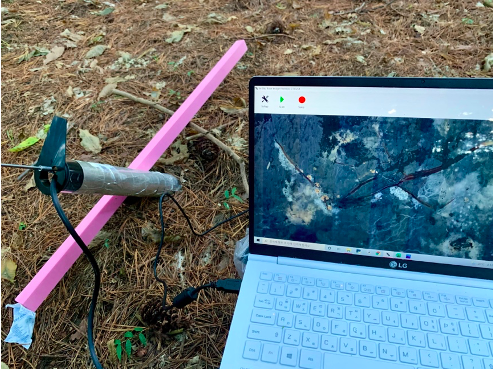
Figure 2. Taking repeated fine root images using a root imaging system. Acrylic tubes inserted into the ground were wrapped with aluminum tape or rubber tape to prevent sunlight from entering the rhizosphere and to minimize unwanted attention or even attack from curious wild critters. These are part of semiotic apparatuses deployed in the research forest. Picture taken by the author on October 13, 2021.
One way for Jieun to plan ahead for her fieldwork was to find firsthand information on these permanent research plots. Jieun needed detailed data on the spatial distribution of individual trees and their specificities—such as species, diameter at breast height (DBH), and height—within each plot, so that she could identify potential spots for her tubes. Published works, such as journal articles and dissertations, are usually the go-to sources for newcomers like Jieun. And yet, what Jieun and I could find from these published works was reduced to only a few numbers or simple descriptors such as GPS coordinates, microclimatic conditions, stand densities (the number of trees per unit area), or species compositions of the research sites. These are meaningful for scientific readers, but impractical for those conducting field research in the same site. Jieun asked around for more detailed information on the plots, but no current member of the lab seemed to keep such data or know its whereabouts, either in digital or physical forms.
This situation was understandably frustrating for Jieun. To begin with, these research plots were established long before the current lab members arrived to Wolhasan. Thus, my interlocutors, including Jieun, had no intimate experience with or knowledge of the earlier data on the plots. Moreover, the data that mattered to my interlocutors was mostly located at the (near) end—not at the beginning nor in the middle—of what Bruno Latour (1999) calls the “chain of transformations,” or what Sabina Leonelli (2016) calls the “data journey.” In this process, data is not simply there, ready for frictionless use. Rather, data is presented, transferred, and managed through specific epistemic, bodily, and institutional operations in order to be deemed valuable and meaningful. In recent years, under the hegemony of data-driven science, “the expansion of data journeys through … packaging strategies, conceptual scaffolds, and infrastructures” has become the matter of utmost urgency in scientific communities (Leonelli 2016, 161). All of these processes are maintained by technical labor and care, which is not always explicit to those not directly involved in the journey (Shapin 1989).
Given these backgrounds, it is neither surprising nor exceptional that my interlocutors lost touch with the earlier datasets on the permanent research plots. Of course, they had a good sense of the current datasets in their own projects. But what they did not know well was the entire journey of those datasets from the beginning. Moreover, scientists tended to look forward, rather than backward, in their data journeys. Not all data survives in these forward-looking processes; datasets are sieved and repackaged by different scientists and other actors for different purposes throughout the journeys.
Let us return to Jieun’s case. In 2020, she had two choices: the first option was to conduct a comprehensive survey of the plots on her own, which would be labor-intensive and time-consuming. The second one, which she much preferred, was to find and utilize previous datasets and information on the same plots. One afternoon, after two hours of searching, Jieun and I found an old field note on a shelf in the lab’s office, which contained some of the information and data she needed. The notes were not perfect, and not all of the contents were legible, but Jieun did not have to start her research from scratch.
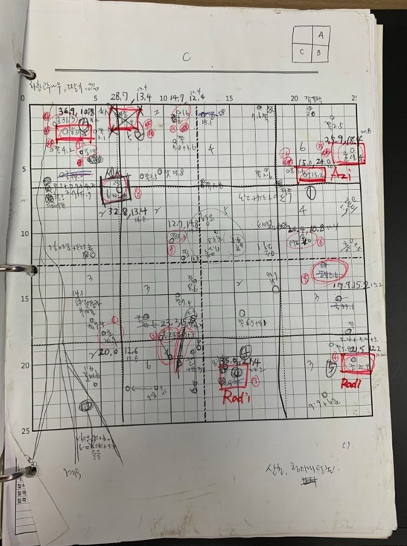
Figure 3. An old field note from 2011 showing the spatial distribution of trees and their characteristics such as species identification, diameter at breast height (DBH), height, topological condition, and proximity to understory vegetation in an oak-dominant plot. Picture taken by the author on October 8, 2020.
Jieun’s experience foregrounds the often-neglected significance of data inheritance within scientific communities, especially in the context of long-term research projects. The longitudinal datasets generated by these projects lay the groundwork for scientists to track changes and trends in more-than-human worlds. This kind of long data journey is only possible if datasets and research infrastructure are maintained with constant care and management over generations. In Wolhasan, however, most scientists spend only two to five years, depending on their research projects or career level, and then hand over their datasets and equipment to the next generation. In contrast, the trees (most of which are in their 50s or 60s) and research equipment in the forest easily outlive each scientist’s relatively short-term residence on the plots. How, then, does the intimate, tacit knowledge of one generation about the research sites transfer to the next generations? What kind of labor, creativity, and care must be invested if scientists are to continue their long-term research? And what do these on-the-ground efforts tell us about broader stories of ecological and climatic troubles in our time?
Changes in technology and scientific trends within the scientific communities further complicate the already muddled processes of data inheritance. At a national symposium in 2021, Dr. Hong, a senior scientist working at a national institute, presented the current status and prospects of the National Forest Inventory (NFI) projects, which have been conducted regularly since the 1960s. Toward the end of his presentation, Dr. Hong proudly claimed that, despite widespread skepticism about the reliability of NFI data and advances in survey methods over the past few decades, the government institute had been able to identify long-term trends in South Korea’s forests. Their database, he continued, would inform the future directions of research, industrial use, and policy in forest management and governance. During the Q&A session, however, a scientist from the audience posed blunt questions: “How do you anticipate what future generations will want to know from the NFI datasets? How can you justify your claim that the NFI database will inform future scientists in the face of rapidly changing climate? Do you have any concrete examples?” After a few seconds of awkward silence, Dr. Hong replied: “To be honest, I do not have a good answer. Yes, I cannot accurately predict the future and what data will be useful for future generations. For the time being, all we have to do is to try to create the best datasets as much as possible. Then future generations will decide what to use or neglect from the datasets we pass on, just as we have done so far with the datasets from the past.”
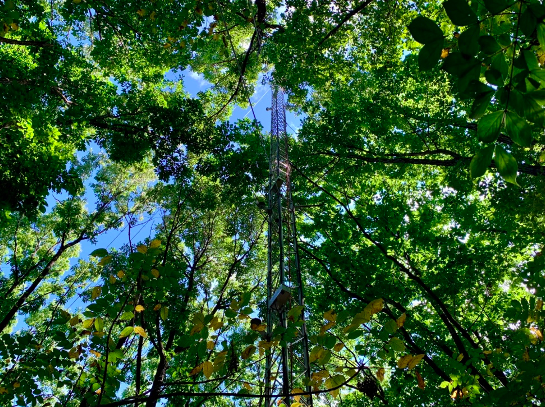
Figure 4. An eddy covariance tower in the Wolhasan forest. This is a technique widely used by environmental scientists, especially in the global North, to trace the influx and efflux of gases (including carbon dioxide and water vapor) above the forest canopy and calculate the net production of forest carbon over years. Photo taken by the author on October 13, 2021.
For many anthropologists, inheritance is not an abstract process. Also, it is not guaranteed by the mere existence of social institutions or structures. Rather, inheritance is made intelligible and sensible through cultural processes and everyday practices, including kin-making, belonging, intergenerational memory, storytelling, material constellations, or social interaction (Biehl 2022; Das 2020; Han 2021; Povinelli 2021; TallBear 2013). In some cases, inheritance is enacted through the intimate histories of family memory, violence, and language across kin relations (Han 2021). Naveeda Khan shows through the case of Bangladeshi women in char communities that inheritance requires careful attention, negotiation, struggle, and labor (Khan 2023, 52–55). Through such enactments of inheritance, next generations could find their voices against structural constraints as well as claim their own lifeworlds in a changing world. And yet, what people inherit—and refuse or fail to inherit—across generations, and how they do so, are entirely open questions that invite ongoing ethnographic interrogation and theorization.
In the ethnographic contexts in which I have worked, inheritance seems to work in a different way from what anthropologists have usually explored. Scientists tend to maintain institutional and professional relationships with one another that give specific contours to what they should inherit, especially in the context of long-term ecological research: datasets, research protocols, infrastructure, and so on. However, I want to emphasize that inheritance still plays a critical role among scientists, beyond institutional and professional domains. For Jieun, data inheritance was almost a practical matter. Without the field notes that we found one day from a lab shelf, she would have had to spend too many days in Wolhasan doing rudimentary surveys before she could conduct her own research. For Dr. Hong, data inheritance was not only a practical matter (for the long-term National Forest Inventory projects) but also an ethical matter (for future generations yet to come). Inheritance work matters in these data journeys, despite the fundamental uncertainty of who will come next and what they will need, as well as the almost-inevitable oblivion or obsolescence of data.
Of course, this short essay cannot provide a complete account of data inheritance within scientific communities in South Korea, which have survived the violence of imperialism (Japanese and the United States), the Korean War, and state authoritarianism over the last century. The episodes I have presented above only scratch the surface of the social, infrastructural, and ecological life of data inheritance in South Korea. As an ethnographer, however, it would be my job to amplify and narrate these often-ignored processes in order to generate a better, more nuanced understanding of data inheritance, which has slow but concrete consequences for the next generations, including trees, scientists, and society, in this troubled world facing runaway climate change.
References
Biehl, João. 2022. “Insurgent Archivings: Sensing the Spirit of Nature and Reckoning with Traces of Our Dead.” Current Anthropology 63(S25): S2-S31.
Das, Veena. 2020. Textures of the Ordinary: Doing Anthropology after Wittgenstein. New York: Fordham University Press.
Han, Clara. 2021. 2021. Seeing Like a Child: Inheriting the Korean War. New York: Fordham University Press.
Khan, Naveeda. 2023. River Life and the Upspring of Nature. Durham: Duke University Press.
Latour, Bruno. 1999. Pandora’s Hope: Essays on the Reality of Science Studies. Cambridge: Harvard University Press.
Leonelli, Sabina. 2016. Data-Centric Biology: A Philosophical Study. Chicago: University of Chicago Press.
Petryna, Adriana. 2022. Horizon Work: At the Edges of Knowledge in an Age of Runaway Climate Change. Princeton: Princeton University Press.
Povinelli, Elizabeth. 2021. The Inheritance. Durham: Duke University Press.
Shapin, Steven. 1989. “The Invisible Technician.” American Scientist 77(6): 554-563.
TallBear, Kim. 2013. Native American DNA: Tribal Belonging and the False Promise of Genetic Science. Minneapolis: University of Minnesota Press.
Sumin Myung (he/him) is a Ph.D. candidate in the Department of Anthropology at Johns Hopkins University. In 2023-2024, he is also a Dissertation Fellow of the D. Kim Foundation for the History of Science and Technology in East Asia and a Graduate Research Fellow of the Alexander Grass Humanities Institute at Johns Hopkins. His dissertation, Crafting Forests, Claiming Futures: Forest Sciences and the Politics of Anthropogenic Forests in South Korea, examines the formation and evolution of scientific forestry in a postcolonial context, asking how historical violence and crises such as Japanese colonialism, the Korean War, and anthropogenic climate change have informed, and have been addressed by, everyday scientific practices in laboratories and field sites. The project has been supported by the Wenner-Gren Foundation, the D. Kim Foundation for the History of Science and Technology in East Asia, the Northeast Asia Council of the Association for Asian Studies, the Kyujanggak Institute at Seoul National University, and Johns Hopkins programs including the Program in Medicine, Science, and the Humanities, the Program in East Asian Studies, the Sidney Mintz Fellowship for Field Research, and the Department of Anthropology.
Cite As: Myung, Sumin. 2023. “Inheriting Data in Long-Term Ecological Studies ” In “data/Big Data in the field” edited by Naveeda Khan, American Ethnologist website, December 22 2023, [https://americanethnologist.org/data-big-data-in-the-field/collecting-jeju-…oujoung-yuna-kim/]
